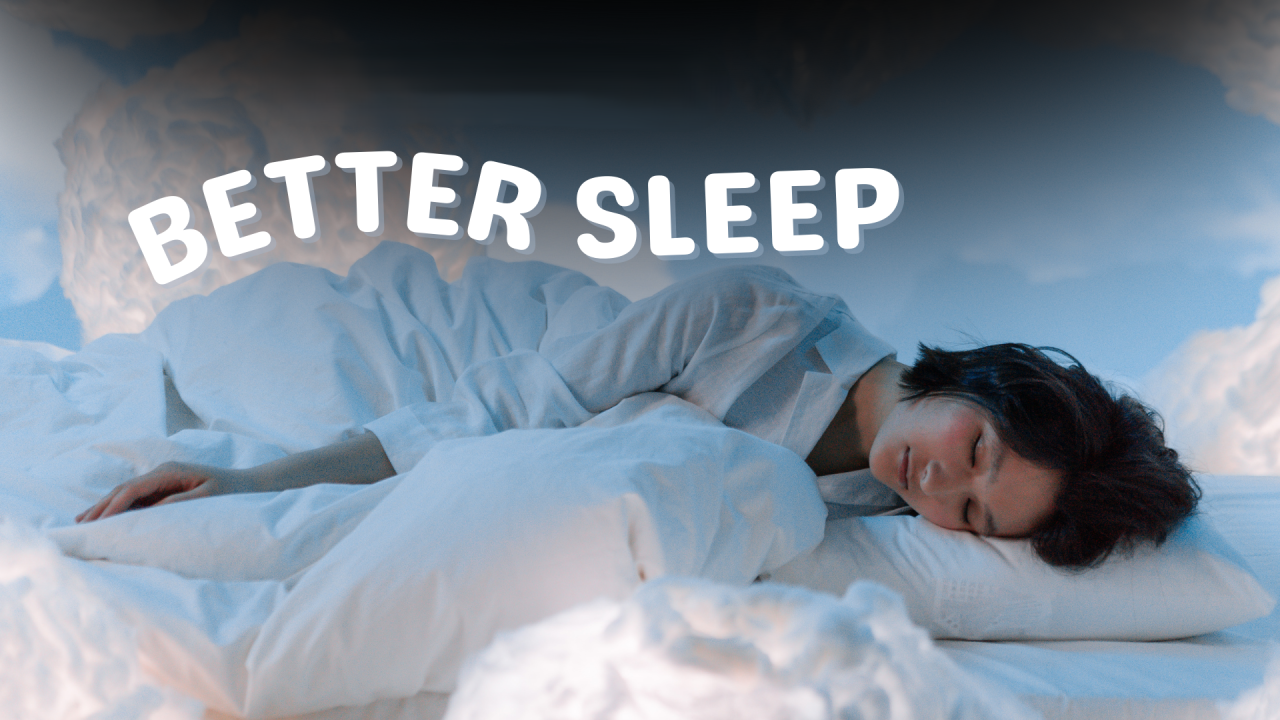health
10 Science-Backed Tips for Better Sleep

Introduction
Sleep is essential for good health, but many people struggle to get enough restful sleep each night. Poor sleep can lead to low energy, difficulty concentrating, mood swings, and even health issues like obesity and heart disease. With modern lifestyles filled with stress, screen time, and irregular schedules, achieving quality sleep can be challenging.
The good news is that science has proven effective ways to improve sleep naturally. By making small lifestyle changes, you can sleep better, wake up energized, and feel healthier overall.
This article explores 10 science-backed tips for better sleep, based on research and expert recommendations.
Top 10 Tips for Better Sleep

Image by: Yandex.com
1. Stick to a Consistent Sleep Schedule
Why Sleep Consistency is Important
Your body runs on a biological clock called the circadian rhythm, which regulates sleep-wake cycles. Going to bed and waking up at different times every day confuses your body, making it harder to fall asleep and wake up feeling refreshed.
How to Maintain a Consistent Sleep Schedule
- Set a fixed bedtime and wake-up time, even on weekends.
- Avoid sleeping in too late after a night of poor sleep, as it disrupts your schedule.
- Get morning sunlight exposure to help regulate your body clock.
By following a regular sleep schedule, your body naturally adjusts to a healthy sleep cycle, leading to better sleep quality.
2. Create a Relaxing Nighttime Routine
Why a Bedtime Routine Helps Sleep
Your brain needs a transition period between wakefulness and sleep. A calming bedtime routine signals your body that it’s time to relax and prepare for rest.
Tips for a Relaxing Nighttime Routine
- Take a warm bath or shower to help lower your body temperature before bed.
- Read a book instead of scrolling through your phone.
- Try deep breathing or meditation to calm your mind.
- Listen to soothing music or white noise to create a peaceful atmosphere.
A consistent bedtime routine helps you unwind and improves sleep efficiency.
3. Limit Screen Time Before Bed
How Blue Light Affects Sleep
Electronic devices emit blue light, which suppresses melatonin, the sleep hormone. Using screens before bed makes it harder to fall asleep and affects sleep quality.
How to Reduce Screen Time at Night
- Avoid phones, tablets, and TVs at least 1 hour before bedtime.
- Use night mode or blue light filters on devices if necessary.
- Choose alternative activities like reading or listening to music.
Reducing screen time before bed helps your body produce melatonin naturally, promoting better sleep.
4. Optimize Your Bedroom for Sleep
Why Your Sleep Environment Matters
Your bedroom should be a sleep-friendly space that promotes relaxation. A cluttered or noisy environment can interfere with sleep.
How to Create a Sleep-Friendly Bedroom
- Keep your room cool (60–67°F or 16–19°C), dark, and quiet.
- Invest in a comfortable mattress and pillows.
- Use blackout curtains or an eye mask to block light.
- Reduce noise with white noise machines or earplugs.
A comfortable sleep environment improves both the quality and duration of sleep.
5. Avoid Caffeine and Heavy Meals Before Bed
How Food and Drinks Affect Sleep
Caffeine is a stimulant that stays in your system for 6–8 hours, making it harder to fall asleep. Heavy or spicy meals close to bedtime can cause indigestion and disrupt sleep.
What to Do Instead
- Avoid caffeine (coffee, tea, energy drinks) after 3 PM.
- Eat light dinners at least 2–3 hours before bed.
- Choose sleep-friendly snacks like bananas, almonds, or herbal tea.
Limiting caffeine and heavy meals improves your ability to fall and stay asleep.
6. Get Regular Physical Activity
How Exercise Helps Sleep
Regular physical activity boosts sleep quality and reduces insomnia. Exercise helps reduce stress, balance hormones, and promote deeper sleep.
Best Practices for Exercising for Better Sleep
- Engage in moderate exercise (walking, yoga, strength training) daily.
- Avoid intense workouts close to bedtime, as they increase alertness.
- Spend time outdoors in daylight to regulate your body’s sleep cycle.
Physical activity is a natural sleep enhancer that helps your body relax.
7. Manage Stress and Anxiety
How Stress Impacts Sleep
Stress and overthinking activate the body’s stress response, making it difficult to relax and sleep. Chronic stress leads to poor sleep quality and insomnia.
How to Reduce Stress for Better Sleep
- Practice deep breathing exercises before bed.
- Write in a journal to release negative thoughts.
- Try meditation, yoga, or progressive muscle relaxation.
Lowering stress levels helps calm the nervous system, leading to better rest.
8. Reduce Alcohol and Nicotine Consumption
How Alcohol and Nicotine Affect Sleep
- Alcohol may make you feel sleepy, but it disrupts REM sleep, causing frequent awakenings.
- Nicotine is a stimulant that increases heart rate and brain activity, making it harder to sleep.
What to Do Instead
- Limit alcohol intake, especially close to bedtime.
- Avoid smoking or vaping before bed.
- Choose relaxing bedtime beverages like chamomile tea.
Reducing alcohol and nicotine helps maintain a deeper, more restful sleep cycle.
9. Expose Yourself to Natural Light During the Day
Why Sunlight is Important for Sleep
Exposure to natural light helps regulate your circadian rhythm, keeping you awake during the day and sleepy at night.
How to Increase Sunlight Exposure
- Spend time outside for at least 30 minutes a day.
- Open curtains and let natural light into your home.
- If working indoors, take breaks outside.
Sunlight exposure improves melatonin production and helps you sleep better at night.
10. Use Sleep Aids Wisely
Natural Sleep Aids
If you struggle with sleep, natural remedies like melatonin supplements, magnesium, or herbal teas can help.
Best Practices for Sleep Aids
- Use sleep supplements only when necessary.
- Avoid long-term dependence on sleeping pills.
- Consult a doctor before taking supplements.
Using sleep aids wisely can support occasional sleep troubles without harming natural sleep patterns.
The Challenges of Sleeping Well
Many people struggle to get good sleep. Busy work schedules, stress, too much screen time, and unhealthy habits can make it hard to rest properly. Some people also have sleep disorders like insomnia or sleep apnea. Finding the right balance between work, life, and relaxation is a challenge for many.
The Future of Sleep Health

Image by: Yandex.com
In the future, sleep science will continue to grow. New technology, better sleep products, and more awareness will help people rest better. More advanced sleep-tracking devices, improved mattresses, and better treatments for sleep disorders will make it easier for people to get quality sleep. Experts may find new ways to treat sleep problems and make daily life less stressful. With better knowledge and habits, more people will enjoy the benefits of deep, restful sleep.
Analysis Table: 10 Science-Backed Tips for Better Sleep
| Sleep Tip | Why It Helps |
|---|---|
| Stick to a schedule | Regulates body clock and improves sleep consistency |
| Follow a bedtime routine | Signals the brain to prepare for sleep |
| Limit screen time | Reduces blue light exposure and supports melatonin production |
| Optimize sleep environment | Creates a comfortable and restful setting |
| Avoid caffeine and heavy meals | Prevents sleep disruption from stimulants and digestion issues |
| Exercise regularly | Enhances relaxation and sleep quality |
| Manage stress and anxiety | Helps calm the nervous system |
| Reduce alcohol and nicotine | Prevents sleep disturbances and interruptions |
| Increase sunlight exposure | Regulates circadian rhythm and melatonin production |
| Use sleep aids wisely | Supports occasional sleep troubles naturally |
Comparative Table: Pros and Cons for Better Sleep
| Tip | Pros | Cons |
|---|---|---|
| Sleep Schedule | Helps you feel more alert during the day | Requires consistency, may be hard to follow |
| Relaxing Routine | Signals your body to wind down | Takes time to establish |
| Comfortable Bedroom | Improves sleep quality | May require investment in bedding |
| Limit Screens | Improves sleep onset | Can be challenging to disconnect |
| Watch Your Diet | Helps you fall asleep faster | Requires planning and discipline |
| Regular Exercise | Promotes better sleep | Needs time, may be tiring before bed |
| Manage Stress | Reduces worries before sleep | Learning techniques may take time |
| Limit Naps | Helps you sleep better at night | May feel tired if not napping |
| Comfortable Position | Reduces discomfort during sleep | Might take time to find the right position |
| Seek Help | Provides expert advice | May require time and money |
Conclusion
Getting quality sleep is essential for physical health, mental clarity, and emotional well-being. By following these science-backed sleep tips, you can improve your sleep naturally and effectively. By prioritizing sleep hygiene and making adjustments where necessary, you can enjoy more restful nights and wake up feeling refreshed and rejuvenated.
Key Takeaways
- Establish a consistent bedtime routine to improve sleep quality.
- Avoid screen time, caffeine, and heavy meals before bed.
- Exercise regularly, reduce stress, and create a comfortable sleep environment.
- Get natural light exposure during the day to support your circadian rhythm.
health
STI Myths vs. Facts: A Young Adult’s Sexual Health Guide

Introduction
Sexual health is one of the most important parts of your overall well-being, yet it’s also one of the most misunderstood. From social media rumors to misinformed friends to awkward conversations in school, many young adults grow up with inaccurate ideas about sexually transmitted infections (STIs). These myths can lead to fear, shame, poor decision-making, and, most importantly, missed opportunities for early testing and treatment.
To help cut through the confusion, this guide breaks down the most common STI myths, the real facts, and what young adults need to know to stay confident, informed, and empowered.
STI Myths vs. Facts: A Young Adult’s Sexual Health Guide
Myth #1: “I don’t have symptoms, so I’m definitely clean.”
Fact: Most STIs show no symptoms and that’s the real danger.
Chlamydia, gonorrhea, syphilis, HPV, and even HIV can stay in your body without obvious symptoms. According to the CDC, nearly 1 in 2 STI infections among young adults go unnoticed because they are silent.
Why this matters:
- You can still pass an STI to a partner even without symptoms.
- An untreated STI can lead to long-term issues like infertility, chronic pain, or complications during pregnancy.
- Regular testing is the only reliable way to know your status.
What to do:
Make testing part of your routine the same way you check your blood pressure or eye health.
Myth #2: “Only people with many partners get STIs.”
Fact: Anyone who is sexually active can get an STI even from a single encounter.
Your STI risk doesn’t depend on the number of partners you have; it depends on:
- Whether protection is used
- Whether you or your partner are tested regularly
- The type of sexual contact you have
A single unprotected encounter can transmit an infection.
Empowering takeaway:
Protecting your health is not about “judgment” it’s about staying informed and making responsible choices.
Myth #3: “Pulling out or using birth control is enough protection.”
Fact: Pregnancy prevention ≠ STI prevention.
Birth control methods like pills, patches, or IUDs do not protect against infections.
Only barrier methods external condoms, internal condoms, and dental dams help reduce STI transmission.
And if cost or access is an issue, remember that many clinics, community centers, and health programs offer free condoms in Missouri, allowing young people to stay protected without financial barriers.
Myth #4: “I would know if someone has an STI just by looking at them.”
Fact: You can’t tell someone’s STI status based on appearance.
Someone can look healthy, feel healthy, and still have an infection. Judging by appearances or making assumptions about someone’s lifestyle is not reliable or safe.
How to stay protected:
- Communicate openly with partners
- Get tested together
- Use protection consistently
- Avoid assumptions
Myth #5: “STIs only happen during vaginal sex.”
Fact: STIs can spread through oral sex, anal sex, and skin-to-skin contact.
Many young adults think they’re “safe” because they don’t engage in vaginal intercourse, but infections like HPV, herpes, syphilis, and gonorrhea can spread through other types of sexual activity.
Protection still matters use condoms, dental dams, and get tested based on the types of sexual contact you have.
Myth #6: “Testing is scary, expensive, or embarrassing.”
Fact: Testing is fast, private, and often free and you have options.
This is one of the most important myths to break. Today, STI testing is more accessible than ever.
You can choose from:
- Clinic testing (often free or low-cost)
- Community health centers
- Confidential youth clinics
- At home HIV test kit options for complete privacy
If you’re nervous about talking to a provider, remember that:
- Clinicians are trained to be non-judgmental
- Your results are confidential
- Early detection keeps you healthy and protects partners
Testing is an act of responsibility, not shame.
Myth #7: “STIs ruin your life.”
Fact: Most STIs are treatable and many are completely curable.
A lot of fear comes from the idea that an STI permanently changes your life. In reality:
- Chlamydia, gonorrhea, and syphilis are curable with medication.
- HIV can be managed with treatment so effectively that many people have undetectable viral loads and live long, healthy lives.
- Vaccines prevent HPV and hepatitis B.
Early treatment is key and stigma should never stop someone from getting help.
Myth #8: “If my partner says they’re clean, I’m safe.”
Fact: Trust is important but testing is essential.
Your partner might genuinely believe they’re STI-free but could be unaware of a silent infection.
Healthy relationships include:
- Honest conversations
- Mutual testing
- Shared responsibility for protection
If you’re uncomfortable discussing testing, try framing it as something you do together rather than suspicion.
Myth #9: “Only adults or older people need to worry about STIs.”
Fact: Young adults have the highest STI rates in the U.S.
People between 15 and 24 account for nearly half of all new STI cases. This makes prevention and education critical for this age group.
Factors that influence risk include:
- Lack of access to affordable testing
- Stigma around sexual health
- Inconsistent condom use
- Reliance on misinformation
- Pressure in relationships
The more you know, the better you protect yourself.
How Young Adults Can Build a Healthy Sexual Routine
Now that the myths are cleared up, here’s what a strong sexual health routine looks like.
1. Get tested regularly
Every 3–6 months if sexually active, or after any new partner.
2. Use protection consistently
And remember: free condoms in Missouri can help remove financial barriers.
3. Talk openly with partners
Communication prevents misunderstandings and increases trust.
4. Take advantage of modern testing options
Prefer privacy? Try an at home HIV test kit or mail-in STI testing.
5. Know your resources
Community clinics, the local health department, and sexual health organizations offer:
- Free or low-cost testing
- Counseling
- Condoms
- STI treatment
6. Reduce stigma for yourself and others
Being informed is empowering. Encourage friends to learn and get tested too.
Final Thoughts
Understanding the difference between STI myths and facts can completely transform how young adults approach their sexual health. When you’re informed, you’re confident and when you’re confident, you make safer decisions.
Whether you’re exploring relationships for the first time or simply want to stay healthy, knowledge and testing are your strongest tools. Break the myths, stay protected, and build a sexual health routine that supports your overall well-being.
health
Monsoon Spa Care | Top Treatments for Mumbai’s Damp Season

Introduction
When the first rain hits Mumbai, the entire city seems to exhale—heat drops, streets smell of wet earth, and everything feels softer. But as comforting as the monsoon is, it also brings its own set of challenges for the skin and body. The humidity rises dramatically, pores stay clogged, hair becomes frizzy, and many people experience dullness or fungal issues. This is why monsoon becomes one of the most important times of the year for self-care. And for many, a trusted spa in Mumbai becomes the go-to sanctuary to rebalance their routine.
Over the years, the spa industry has adapted beautifully to the city’s rainy-season needs, offering treatments designed to combat humidity, detoxify the skin, and strengthen the body’s immunity. These are the therapies Mumbaiites rely on every monsoon—and for good reason.
Why Monsoon Skincare and Bodycare Matters
With moisture constantly lingering in the air, sweat doesn’t evaporate properly. This leads to:
- Acne and blackheads due to clogged pores
- Dull, sticky skin from excess oil
- Frizzy, unmanageable hair
- Body stiffness because of fluctuating temperatures
- Higher chances of skin infections
Monsoon spa routines help counter these effects by keeping the skin clean, the body supple, and the mind relaxed.
Monsoon Spa Treatments Mumbaiites Love
1. Deep-Cleansing Charcoal & Clay Facials
Humidity traps dirt and oil on the skin surface. Charcoal and clay facials—popular at any modern spa in Mumbai—draw out impurities, tighten pores, and reduce monsoon breakouts. They leave the skin feeling clean without stripping it.
2. Ayurvedic Abhyanga Warm Oil Massage
The blend of monsoon chill and moisture often causes muscle stiffness. Abhyanga, done with warm medicated oils, improves circulation, strengthens muscles, and boosts immunity—essential for those prone to seasonal fatigue.
3. Exfoliating Body Polishes
Dead skin tends to accumulate faster in humid weather. Coffee, sugar, or sea-salt body scrubs offered in many Mumbai spas remove buildup and keep the skin fresh and breathable.
4. Hot Stone Therapy for Damp-Weather Aches
The monsoon can worsen joint pain. Hot stone massage melts tension, warms the muscles, and relieves deep stiffness caused by sudden temperature shifts.
5. Anti-Frizz Hair Spa Rituals
Humidity can transform even the smoothest hair into a frizzy cloud. Hydration-based hair spas with keratin, argan oil, or shea butter restore shine and protect strands from moisture overload.
6. Aromatherapy for Seasonal Mood Swings
Rainy weather often brings lethargy. Aromatherapy using peppermint, bergamot, or lavender helps re-energize the mind and refresh the senses—a monsoon favourite among wellness lovers.
A Season to Reset and Rejuvenate
While the monsoon refreshes the city, it also asks for a little extra care. With the evolving spa industry offering specialised rainy-season therapies, Mumbaiites now have access to treatments that not only solve seasonal skin and hair issues but also create moments of calm in the midst of grey, rainy weeks.
Whether you visit a professional spa in Mumbai or adopt monsoon-friendly rituals at home, seasonal care ensures your skin stays clean, your hair stays healthy, and your body stays balanced—all through the damp, dreamy rains.
Spa Tips for Monsoon Wellness
1. Stay Hydrated
Drinking plenty of water supports detoxification and keeps your skin hydrated during the humid season. Herbal teas and infused water are excellent additions to monsoon wellness routines.
2. Maintain Hygiene
The damp season increases the risk of skin infections. Regular spa visits, combined with personal hygiene, help prevent fungal and bacterial infections.
3. Moisturize Regularly
Even though skin may feel oily during the monsoon, it still requires proper moisturization. Lightweight, non-greasy moisturizers keep the skin hydrated without clogging pores.
4. Choose Seasonal Spa Treatments
Opt for treatments that suit the monsoon season. Ayurveda, herbal facials, and detox therapies are ideal for countering the effects of humidity and dampness.
5. Relax Your Mind
Monsoon blues are common due to cloudy skies and damp weather. Spa therapies focusing on relaxation, like aromatherapy and massages, help reduce stress and enhance mental well-being.
How to Choose the Right Spa in Mumbai
1. Cleanliness and Hygiene
Ensure the spa maintains strict hygiene, especially during monsoon, to prevent infections.
2. Experienced Therapists
Professional therapists trained in Ayurveda, aromatherapy, and other treatments provide safe and effective care.
3. Quality Products
Check if the spa uses herbal, natural, and high-quality products suitable for monsoon skin and body care.
4. Personalized Treatments
A spa that customizes treatments based on your body type, skin condition, and wellness needs provides the best results.
5. Relaxing Environment
A calm and serene environment enhances the overall spa experience, helping you relax and enjoy the treatments fully.
DIY Spa Tips for Monsoon at Home
While professional spa visits are ideal, you can also try simple treatments at home:
- Warm oil massage for 10-15 minutes daily to relieve muscle stiffness
- Steam inhalation with herbs to open pores and detoxify
- Aloe vera or cucumber masks to soothe and hydrate skin
- Foot soaks with Epsom salts to relax tired feet
- Aromatherapy using essential oils to reduce stress and improve mood
These simple routines complement professional spa treatments and keep you refreshed throughout the season.
Conclusion
Monsoon spa care is essential for Mumbaiites to stay healthy, refreshed, and rejuvenated during the damp season. From Ayurvedic massages and hydrating facials to steam therapy and aromatherapy, spa treatments help improve skin health, reduce stress, boost immunity, and detoxify the body. Regular spa care, combined with proper hydration, hygiene, and relaxation techniques, ensures you enjoy the monsoon season fully. Investing time in spa treatments not only rejuvenates the body but also uplifts the mind, making monsoon a season of wellness and self-care.
health
Rhinoplasty Recovery Tips That Work for Toronto Folks

Introduction
Getting a Rhinoplasty Toronto is more than just a surgical procedure it’s an investment in your facial harmony and self-confidence. The decision is made, the surgeon is booked, and now you’re standing at the most critical phase: recovery.
The Modern Toronto Plastic Surgery Trend: Total Facial Harmony
Before diving into the recovery details, it’s worth noting the contemporary trend in Rhinoplasty Toronto. Today’s patients—especially the younger, media-savvy generation—are not seeking a generic “perfect nose.” They are looking for a nose that enhances their individual identity and blends seamlessly with their other features.
This pursuit of “total facial harmony” is why surgeons often discuss complementary procedures. If you’ve opted for a combination surgery—such as Rhinoplasty alongside Blepharoplasty Toronto (eyelid lift) or a Chin Implant Toronto for better profile balance—your recovery is a little more complex, requiring an integrated approach.
The Non-Negotiable: Master the Elevation Game
In the first week post-surgery, swelling is your biggest challenge, and your sleeping position is your most powerful tool to combat it. Toronto experts are unanimous on this:
- The Position: You must sleep and rest with your head elevated at a 45-degree angle or higher. Think of it as a gentle slope, not just one extra pillow.
- The Gear: Use a foam wedge pillow or sleep in a recliner chair for the first 1-2 weeks. This position leverages gravity to drain fluid away from your nose and face, significantly reducing swelling and bruising.
- The Guardrail: If you are a side sleeper, invest in a travel pillow (the U-shaped kind) to wear while sleeping on your back. This prevents you from inadvertently rolling onto your side in the middle of the night, which could put pressure on your healing nose and compromise your results.
Combined Procedure Tip (Blepharoplasty & Chin Implant): Elevation is even more crucial. For Blepharoplasty Toronto patients, keeping your head above your heart is vital to minimizing eyelid swelling. For a Chin Implant Toronto, the elevated position reduces swelling in the lower face and neck as well.
Cold Comfort: The Strategic Ice-Pack Protocol
Cold compresses are great for the first 48-72 hours to constrict blood vessels and limit bruising. However, applying ice directly to the nose is a major don’t as it can shift bone or cartilage.
- The Rule: Apply cold compresses (or bags of frozen peas wrapped in a soft cloth) to your cheeks and eye area, not the nose itself.
- The Schedule: Follow a 20 minutes on, 20 minutes off cycle. Consistency in the first two days makes a difference.
The Congestion Conundrum: Resist the Urge to Blow
Post-rhinoplasty congestion is one of the most common complaints. The internal swelling can make you feel like you have a bad cold, and the urge to blow your nose will be immense. Resist it at all costs.
- The Danger: Blowing your nose increases pressure inside the nasal passages, risking bleeding, disrupting internal sutures, or potentially displacing delicate grafts.
- The Solution: Use the saline nasal sprays recommended by your surgeon gently to keep the nasal passages moist and help clear crusting. If you absolutely must sneeze, try to do it with your mouth open to release the pressure.
Your Low-Sodium, Healing Diet
Your diet is a silent powerhouse in your recovery. In a city where takeout is a way of life, you need to be intentional about your nutrition.
- The Enemy: Sodium. High salt intake leads to fluid retention, which directly translates to increased and prolonged facial swelling. For the first two weeks, become a detective of hidden sodium in all your foods.
- The Allies: Focus on lean proteins (chicken, fish, eggs), and foods rich in anti-inflammatory powerhouses like Vitamin C (citrus, berries) and Vitamin A (leafy greens). These nutrients are the building blocks your body needs to repair tissue and manage inflammation.
- The Hydration Hack: Drink plenty of water. Avoid using a straw, as the sucking motion can create pressure in the facial tissues.
Activity and Sun Protection in the GTA
Toronto life is active, but your body needs a sabbatical.
- Exercise Pause: Absolutely no strenuous activity (running, heavy lifting, elevated heart rate) for at least 4 to 6 weeks. Light walking is encouraged to promote circulation and prevent blood clots, but keep it gentle.
- Contact Risk: Avoid any activity where your nose could be bumped for at least 3 months. This includes contact sports, crowded places, or even playing vigorously with pets or small children.
- The Sunscreen Mandate: The skin on your nose will be extremely sensitive to UV rays for up to a year. Sun exposure can cause persistent swelling, redness, and even permanent discoloration or hyperpigmentation of the scar tissue. Always wear a wide-brimmed hat and a high-SPF, broad-spectrum sunscreen (SPF 45+) whenever you step out into the Toronto sun—even on cloudy days.
- Combined Procedure Tip (Blepharoplasty): After Blepharoplasty Toronto, you must also protect your eyes from the sun and wind. Dark sunglasses are mandatory for the first few weeks, complementing the hat you’ll wear for your nose.
The Spectacle Suspension: Glasses and Your New Bridge
If you wear glasses, the weight of the frames resting on the bridge of your nose can put undue pressure on the healing bone and cartilage, potentially affecting your final result.
- The Solution: Switch to contact lenses for at least 4 to 8 weeks, or as directed by your surgeon.
- The Workaround: If contacts aren’t an option, your surgeon may recommend taping your glasses to your forehead or using special lightweight attachments that redistribute the pressure away from the nasal bridge.
The Psychological Prep: Managing Expectations
The recovery journey for Rhinoplasty Toronto is a marathon, not a sprint. The first week, with the splint, bruising, and peak swelling, is often the toughest psychologically.
- The Timeline: While the splint is removed around 7 days and most bruising fades by 2-3 weeks, 80% of the swelling resolves by 3 months. The final, refined result—especially the definition in the nasal tip—can take a full 12 to 18 months to emerge as the last of the residual swelling slowly dissipates.
- The Digital Trend: Many top Toronto surgeons use 3D imaging or digital morphing pre-surgery. Review those images often to remind yourself of the goal during the swollen phase. Patience is your most important virtue.
Conclusion: Your New Nose, The Toronto Way
A successful Rhinoplasty Toronto recovery is a blend of clinical instruction, common sense, and personal discipline. By being prepared, staying elevated, watching your sodium, and protecting your new profile from sun and trauma, you’re doing everything in your power to ensure a smooth transition and beautiful outcome.
Remember, your surgeon and their team are your best resource. If you have any concerns about pain, bleeding, or unusual swelling, never hesitate to call your Toronto clinic right away. Embrace the quiet time, let your body heal, and soon you’ll be enjoying the stunning results that complete your total facial harmony.
-
Business2 years ago
Cybersecurity Consulting Company SequelNet Provides Critical IT Support Services to Medical Billing Firm, Medical Optimum
-
Business2 years ago
Team Communication Software Transforms Operations at Finance Innovate
-
Business2 years ago
Project Management Tool Transforms Long Island Business
-
Business2 years ago
How Alleviate Poverty Utilized IPPBX’s All-in-One Solution to Transform Lives in New York City
-
health3 years ago
Breast Cancer: The Imperative Role of Mammograms in Screening and Early Detection
-
Sports3 years ago
Unstoppable Collaboration: D.C.’s Citi Open and Silicon Valley Classic Unite to Propel Women’s Tennis to New Heights
-
Art /Entertainment3 years ago
Embracing Renewal: Sizdabedar Celebrations Unite Iranians in New York’s Eisenhower Park
-
Finance3 years ago
The Benefits of Starting a Side Hustle for Financial Freedom































